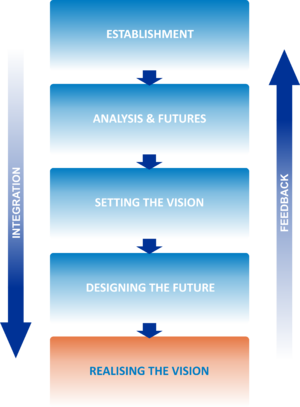Integrating Climate Change into the ICZM planning process - Realising the Vision
| Introduction |
|
Establishment |
|
Analysis and Futures |
|
Setting the Vision |
|
Designing the Future |
|
Realising the Vision |
|
Implementing
ICZM involves a wide range of instruments to implement the strategy. A central pillar is land use regulation and the limitation on the use of certain areas on environmental grounds. But also important is adoption of standards for building, energy and other sectors that provide goods and services. In addition it is increasing important to use fiscal instruments to promote certain actions that are considered desirable. The use of such instruments serves a number of purposes. First, it is more flexible than direct physical controls for the person whose actions are being affected. Second, if the instrument takes the form of a charge it allows the authorities to raise much needed financial resources that can be put to use to provide the essential public goods. Third, as long as the charge is in place it provides a continued incentive towards greater efficiency, which is not the case when only physical controls that have to be complied with.
Areas where fiscal instruments could be used, specifically to address some of the climate change impacts that have been discussed are:
- Transferable development rights, where an individual whose rights have been taken
away in one location can have them reallocated in another location. These make the introduction of new regulations easier and allow a market in such rights to develop [1].
- The use of charges that better reflect the cost of services, particularly related to water.
- Development of insurance markets to provide cover against risks of flooding etc. to
the extent that they bear at least part of the costs. This encourages the private sector and individuals to modify their behaviour and not take excessive risks, as they tend to do when all damage costs are covered through public funds.
- Charges on tourists to cover the additional burden of the public services they demand, as a source of finance for improved environmental protection.
The range of instruments to be used in the ICZM should be identified in the strategy, along with some priorities indicating which ones are preferred from a national viewpoint. The actual selection, however, will be made at the plan stage, national or local as appropriate.
Investment and Infrastructure
- ↑ Markandya, A., S. Arnold, M. Cassinelli and T. Taylor (2008) “Protecting Coastal Zones In The Mediterranean: An Economic and Regulatory Analysis”, Journal of Coastal Conservation, 12:145-159.

